Ask Willow YOUR questions! Our resident yoga expert, Willow Ryan, is here to give you guidance on yoga, meditation, self-development, and the mind-body connection. Email your question for her to willow@pulsebeatfit.com.
Dear Willow,
Being an avid lifter, I try to be knowledgeable about techniques and supplemental strategies for lifting. Lately I have read more and more about how important flexibility is the key to the compound lifts that form the backbone of a solid lifting program. As my town does not have a gym that offers yoga, I have to rely on the Internet for information and tips. I have read your articles and greatly enjoy the content you provide. I was hoping you could provide some information about stretches and positions that could help lifters who focus on squats, deadlifts, bench press, and military press. Thank you so much for you time.
Sincerely,
Lifting on My Own
Dear Lifting on My Own,
Thank you for your email. Your question is insightful. Balancing strength and length in muscles is essential for long-term mobility. I have firsthand experience with the aches and strains associated from past weight training. This was before I knew anything about the need for stretching or yoga. In the past, I have also over-emphasized doing yoga without strength-focused training. Overstretching leads to weaknesses in both muscles and joints. Now I know that to feel balance, I must incorporate cardio, flexing, and stretching into any movement program. All three enhance the effects of the other.
Think in terms of the geometric shapes or patterns you create with your body. If one position is repetitive, the body will adapt to maintain this shape. You train your body to hold the flexion required for this position. In other words, you know how you feel when finally standing up after long periods of sitting? You might feel stiff and sluggish. This is because your body is cool and stuck and it requires exertion on your part to pull it out of its stiffened shape.
Balance is achieved by training the body to minimize long-term holding of any one position. Change the shape frequently and rotate the sequencing to stay agile.
Optimize balance in your weight-training program by reordering to this sequence:
- Bench Press
- Squats
- Military Press
- Deadlifts
Deadlifts or overhead lifts begin in a flexed inward position and end outstretched. Make these the last of your routine and add a couple of the stretches from below for lengthening out. This will keep you from feeling like a tightly-coiled spring.
Weight Training Stretches:
1. Standing Straddle Side Bend – Arms overhead, hand grabs wrist, five breaths each side
(Note: This is similar to the photo but performed from standing straddle position.)
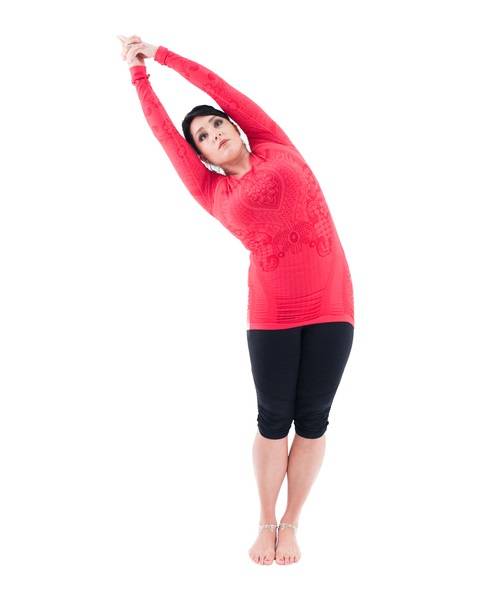
2. Straddle – Lay on back with legs outstretched on wall
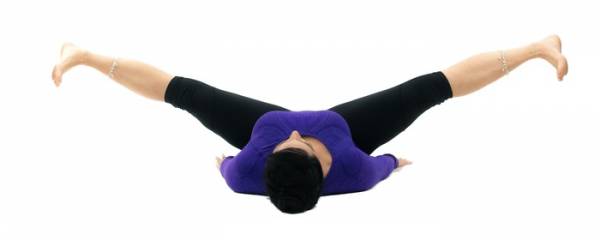
3. Bridge – Ten breaths

4. Wheel Over Yoga Ball – Ten breaths
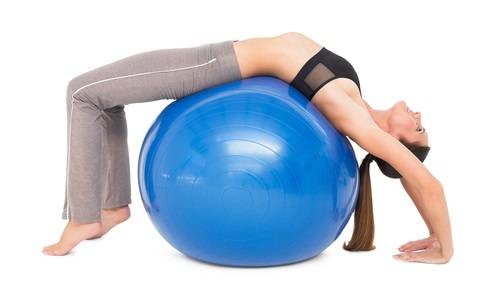
5. Cobra – Five breaths
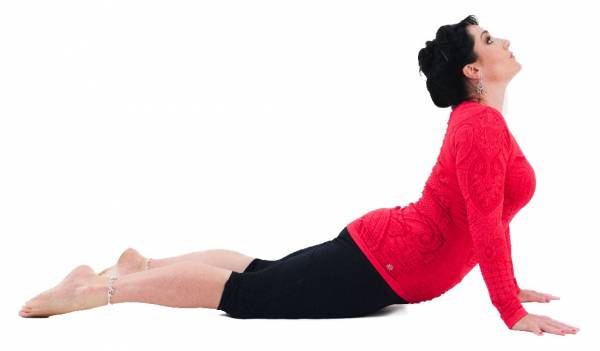
6. Savasana – Five breaths
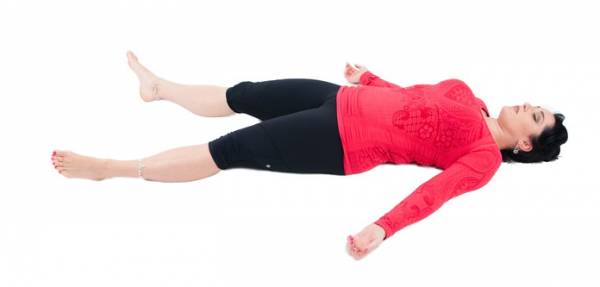
Ending any program with stretches slowly cools the body down. Dead cells, acidosis, and cellular wastes are moved out via the lymphatic system. Osteoblasts and fibroblasts then begin their jobs of building bone and healing wounds.
Creating a methodology for any exercise program will enhance the effects. Like a book, any program must include a beginning, middle, and end. Keeping in mind the desired outcome will help you create the beginning and middle. Have fun weaving these stretches in and feel for the sensations of being limber.
Willow
Photos 1 & 5 provided by Shutterstock.
Photos 2, 3, 4, 6, and 7 property of Pulse Beat Fit.






